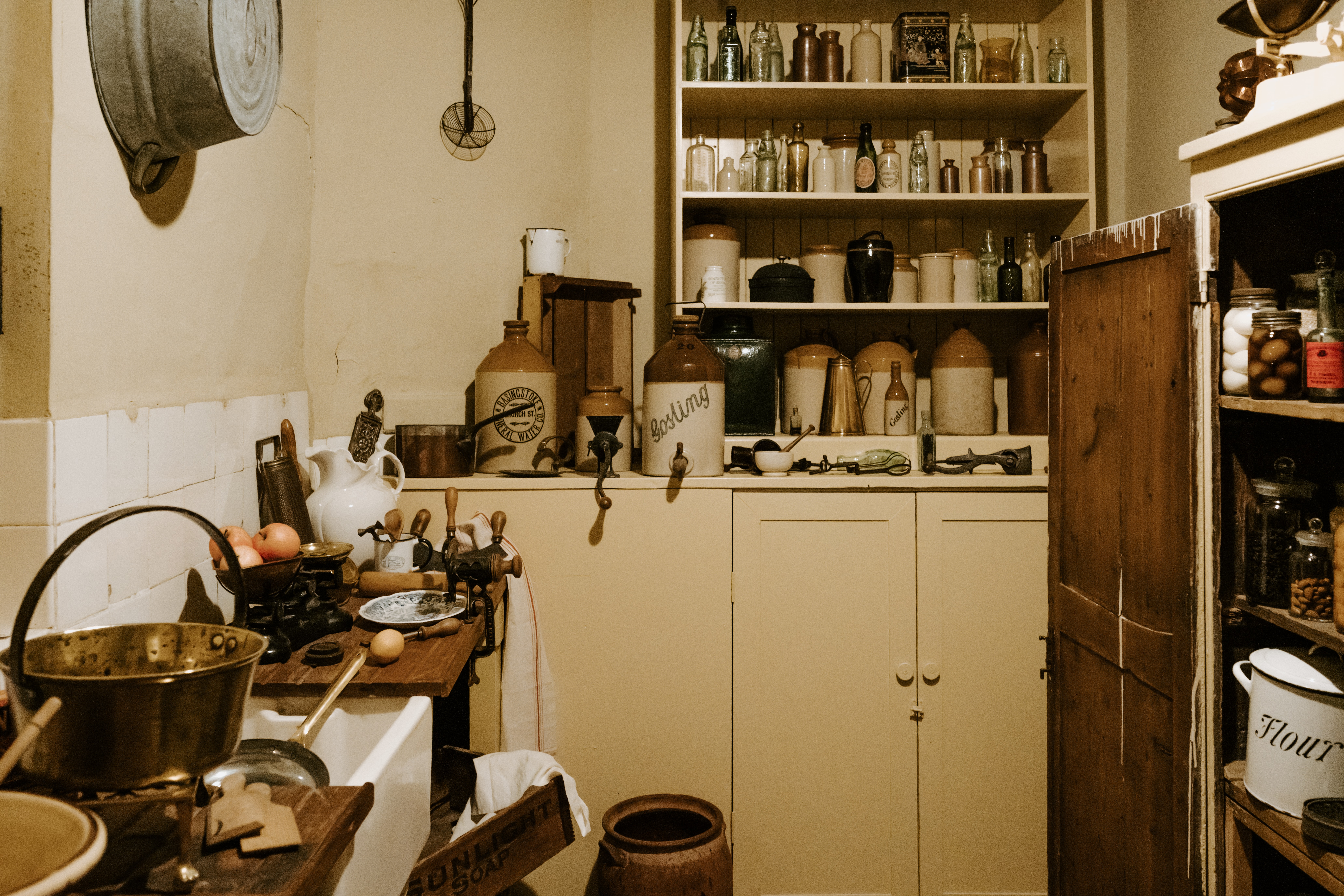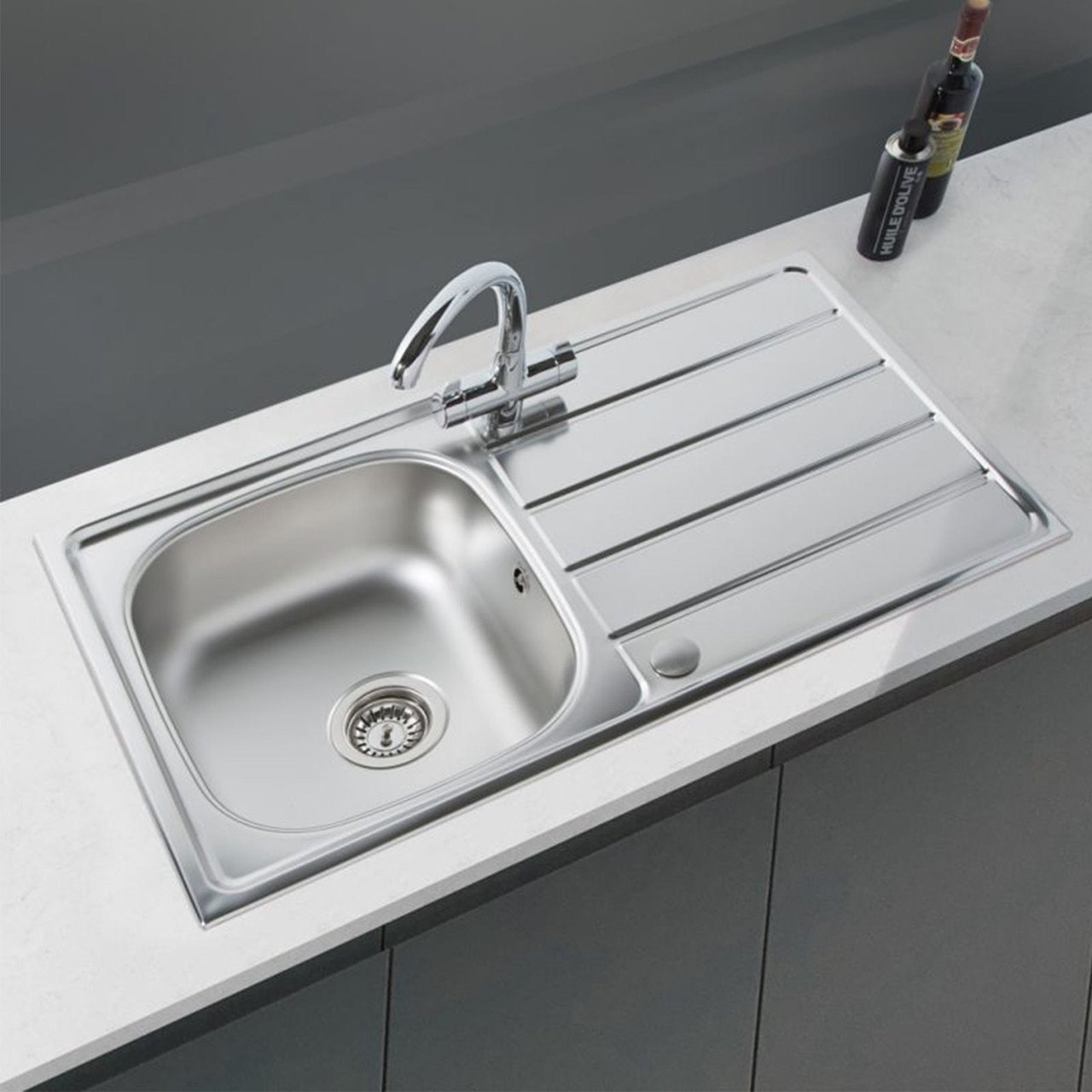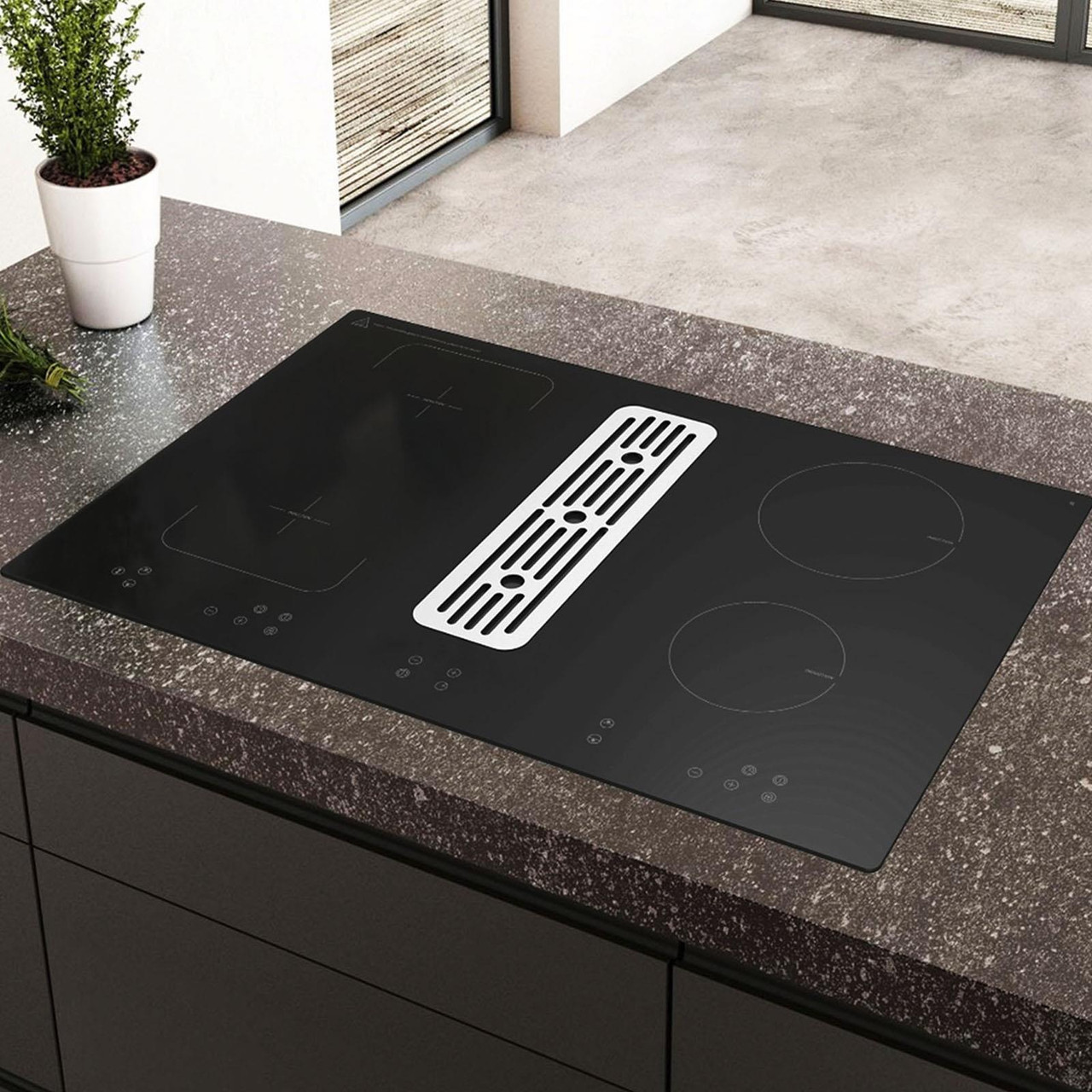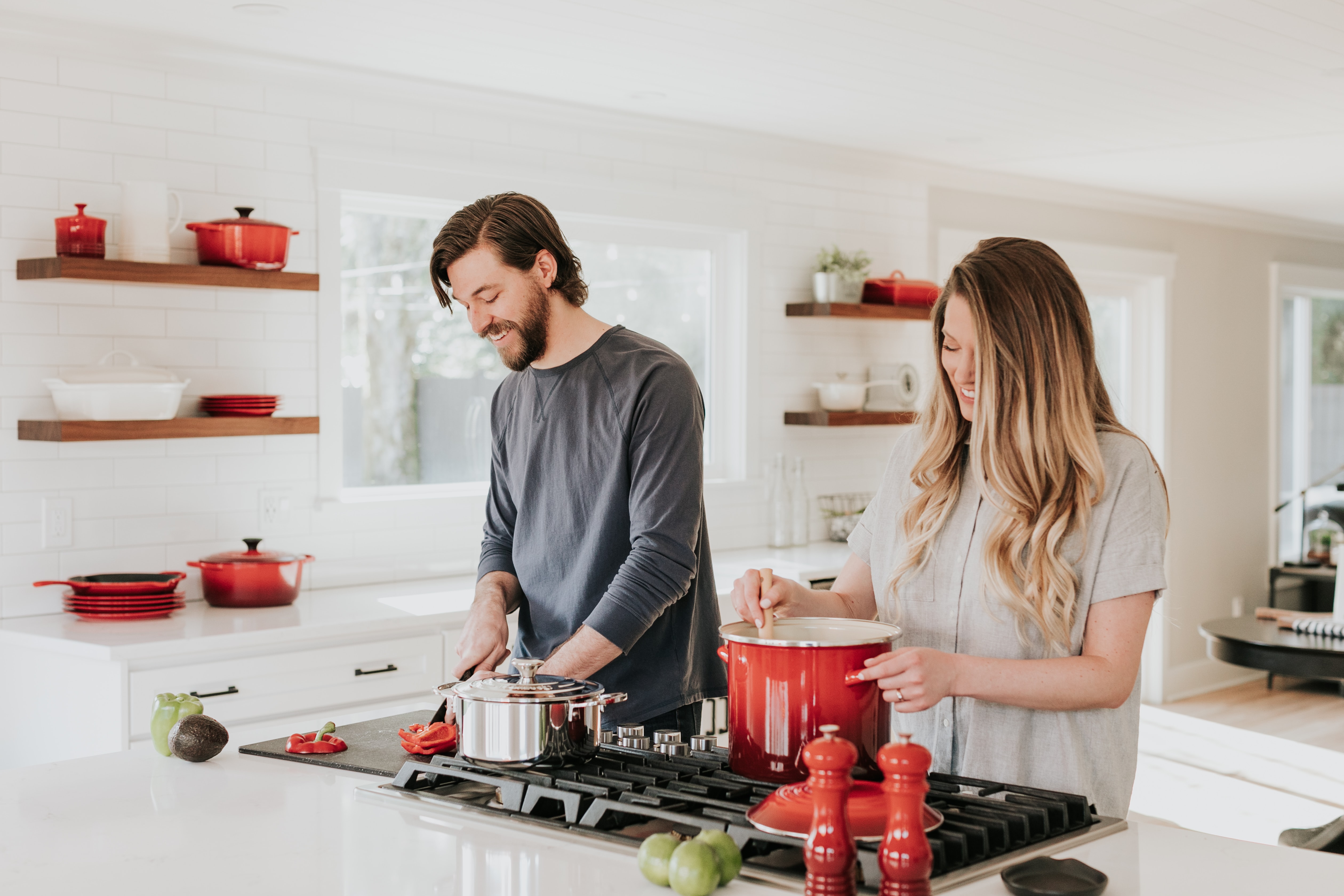
How Kitchens & Appliances Have Evolved Through History.
Posted by Harrison Thomas on 14th Feb 2023
How kitchens and appliances have evolved through history.
Homes have evolved greatly over time, reflecting the changes in our culture, society, and the environment. Most significantly, technology has improved in leaps and bounds with devices such as: home automation systems, smart locks, voice-activated devices, and smart lighting. Each room in your home has progressed over the last century, but no room has seen such dramatic advancements as the kitchen. In this blog, we will look at what kitchens were like in the past, how they have improved in the present, and what we can expect in the future.
Kitchens of the past.
The average kitchen 100 years ago was very different from kitchens today. They lacked the technology, space, and design features that have made cooking and food preparation much easier and more enjoyable. Kitchens of the past were often much smaller than kitchens today and were not designed with functionality in mind. They often lacked counter space and storage, making food preparation and cleaning more difficult.
Today, some people still experience space issues in their kitchens, but there are ways to counter this with well-designed kitchen appliances. Devices such as Willow’s compact Freestanding Vented Tumble Dryer can find a place to live in anyone’s kitchen and can even be mounted on the wall and could fit in the smallest of kitchens.
Here are more examples of how kitchens were considerably worse off than today:
- Technology: Kitchens a century ago were not equipped with modern appliances like a Montpellier refrigerator, a Hisense oven, or a Beko dishwasher. Instead, they relied on iceboxes, wood-fired stoves, and hand-cranked washing machines. Food was prepared by using basic tools like cast iron pans and rolling pins.
- Lighting: Kitchens were not well lit, often relying on natural light from windows or oil lamps. This made cooking and cleaning more challenging, especially in the evenings.
- Design: Kitchens were not considered a central part of the home and were often located in the basement. They were often drab and lacked aesthetic appeal. Fortunately, there are more affordable and varied options available to decorate your kitchen to your heart's content. For example, you can decide to have your sink made from: stainless steel, granite, ceramic, or a composite sink. You can view the differences between these sinks here.
- Food preparation: Food preparation was much more time-consuming and labour-intensive. Fresh ingredients were difficult to come by and people often had to preserve food for long periods. Meals were typically made from scratch, and there was a heavy emphasis on seasonal and locally sourced ingredients.

Kitchens of the present.
The modern kitchen has seen many advancements in technology, leading to improved energy efficiency, convenience, safety, and aesthetics in kitchen appliances. These appliances now consume less energy, making cooking and food preparation easier and more accessible. Improved safety features, such as cool-touch exteriors, are designed to stay cool to the touch, which minimizes the risk of burns and other accidents. Additionally, kitchen appliances now come in a wider range of designs and finishes, allowing homeowners to choose appliances that match their kitchen decor and personal style.
- Energy efficiency: Many kitchen appliances are now designed to be more energy-efficient, reducing the amount of energy they consume and lowering electricity bills. For example, many ovens now use less energy and have better insulation, leading to improved energy efficiency. Look at SIA’s 2kW SO103 Single True Single Fan Oven and imagine how it would look in your kitchen.
- Convenience: Modern kitchen appliances are designed to make cooking and food preparation easier and more convenient. For example, ovens now have self-cleaning capabilities and are programmable, allowing for precise cooking. Extractor fans have also seen an upgrade with downdraft extractor fans. Downdraft extractor fans are integrated into the cook top and are not mounted above, so they save valuable cabinet and counter top space. Hot taps are also sweeping the kitchen scene, no more tedious kettle wait times, and nothing but instant hot drinks. Look at SIA's 3-in-1 Hot Water Tap to see what the best have to offer.
- Safety: Kitchen appliances are now designed with improved safety features, such as child locks, and automatic shut-off mechanisms to prevent accidents and fires. Induction hobs are considered a safe option for cooking because they use magnetic induction to generate heat instead of an open flame or radiant heat like a traditional gas or electric stove.
- Aesthetics: Kitchen appliances have become more stylish, with a greater range of design options and finishes to choose from. This allows homeowners to choose appliances that complement their kitchen décor and personal style. Look at what design trends are leaving an impact this year.
The advancements in technology have greatly impacted the modern kitchen, resulting in kitchen appliances that are more energy-efficient, convenient, safe, and aesthetically pleasing. Whether it be through lower energy consumption, self-cleaning capabilities, improved safety features, or a wider range of designs and finishes, homeowners now have a variety of options to choose from when selecting appliances for their kitchens. These improvements have made cooking and food preparation easier and more enjoyable, while also helping to reduce electricity bills and prevent accidents.

Kitchens of the future.
In the future, kitchens are likely to be more advanced, efficient, and focused on making life easier for their users. Some potential developments in kitchen technology include:
- Artificial Intelligence: AI-powered kitchens could make meal planning, cooking, and cleaning easier and more efficient. AI could help users plan meals based on dietary restrictions, food preferences, and ingredients on hand, and even suggest recipes based on the time of day and other factors. Look at how Samsung is leading the race to an AI-controlled fridge.
- Augmented Reality: AR technology may be integrated into kitchens, allowing users to visualize what their meals will look like before they even start cooking. This could make meal planning and preparation easier and more intuitive.
- Sustainable Energy Sources: Kitchens of the future could rely on sustainable energy sources, such as solar, wind, or geothermal power, to reduce their carbon footprint and become more environmentally friendly.
- Health and Wellness: Kitchens may be designed with health and wellness in mind, with appliances that monitor and control nutritional intake, and surfaces that are non-toxic and antimicrobial.
These are just a few examples of the changes that we may see in kitchens in the future. As technology continues to advance, it's likely that kitchens will become even more efficient, eco-friendly, and focused on improving health and wellness.

In conclusion, kitchens are central to our daily lives and much more than just a place for cooking and food preparation. They are the heart of the home, where families bond, memories are made, and where health and wellness can be promoted. Kitchens play a crucial role as the gathering place where food is prepared, meals are enjoyed, and where children learn about food, nutrition, and cooking. With advancements in technology, kitchens continue to evolve and provide opportunities for families to create beautiful and functional spaces that meet their needs and tastes, and serve as the hub for bonding, learning, and relaxation.

